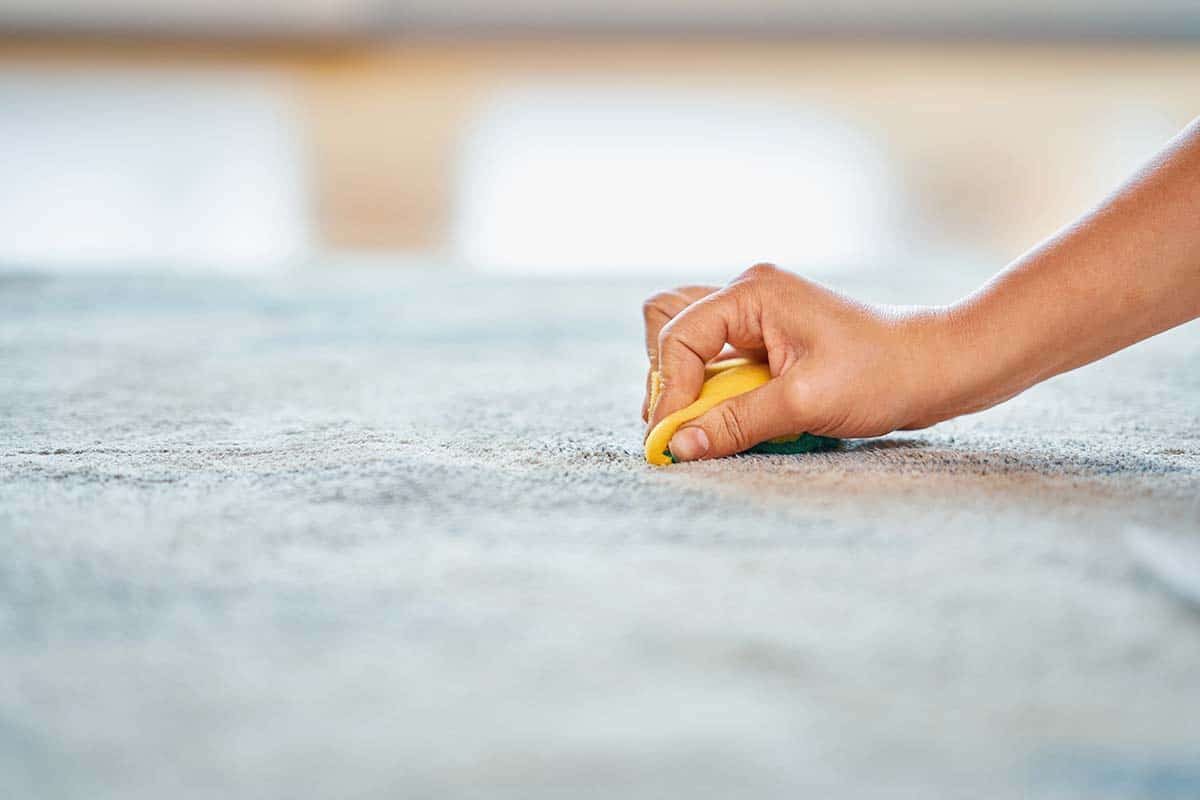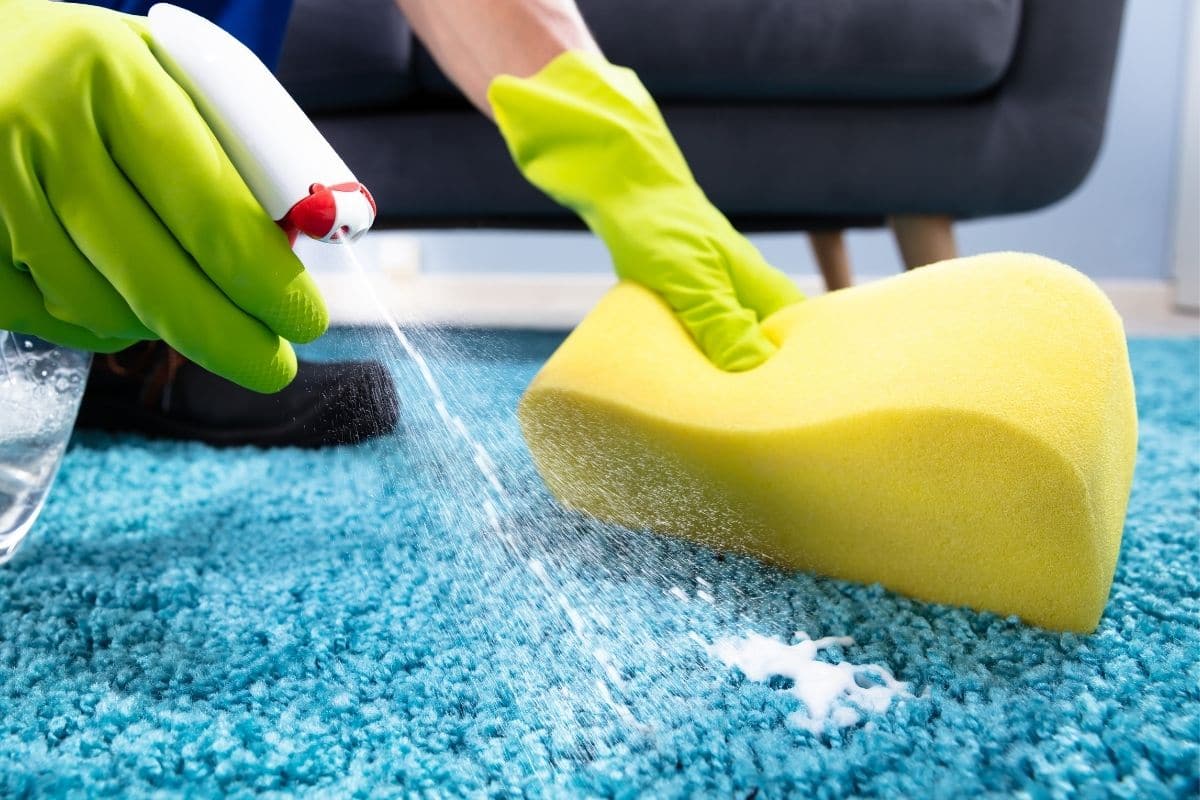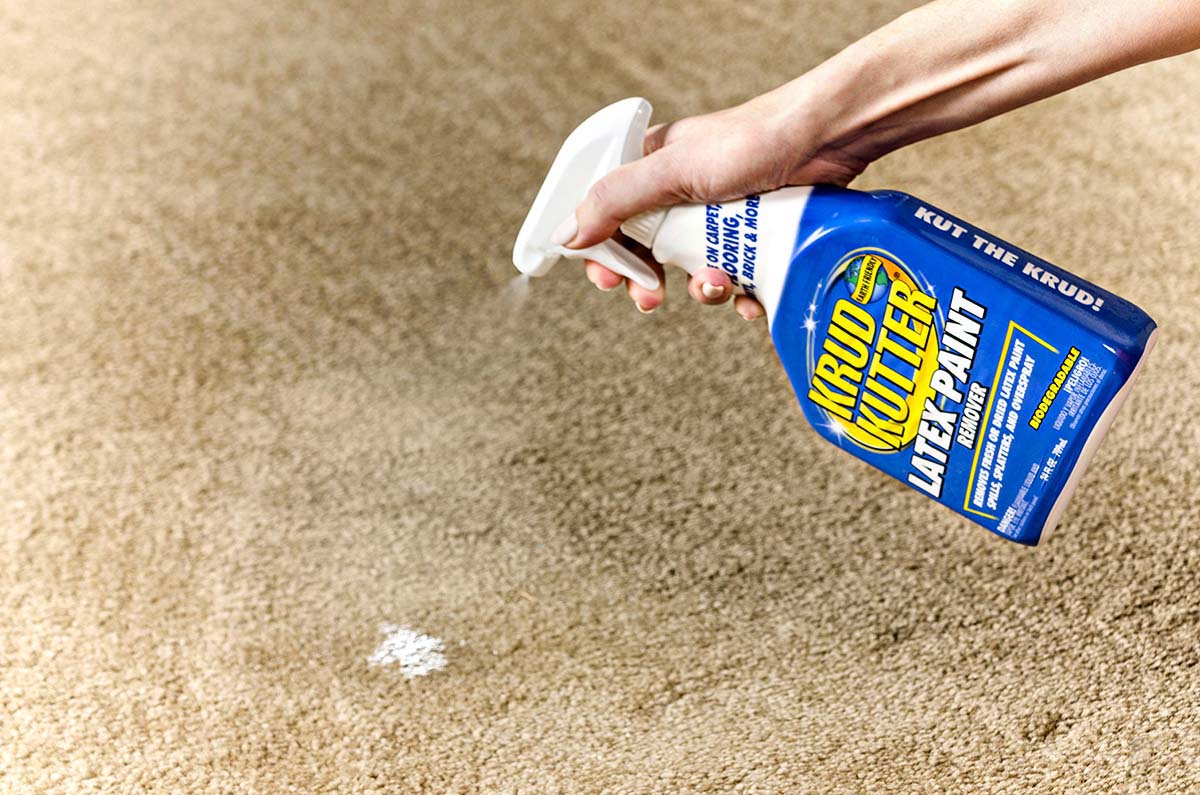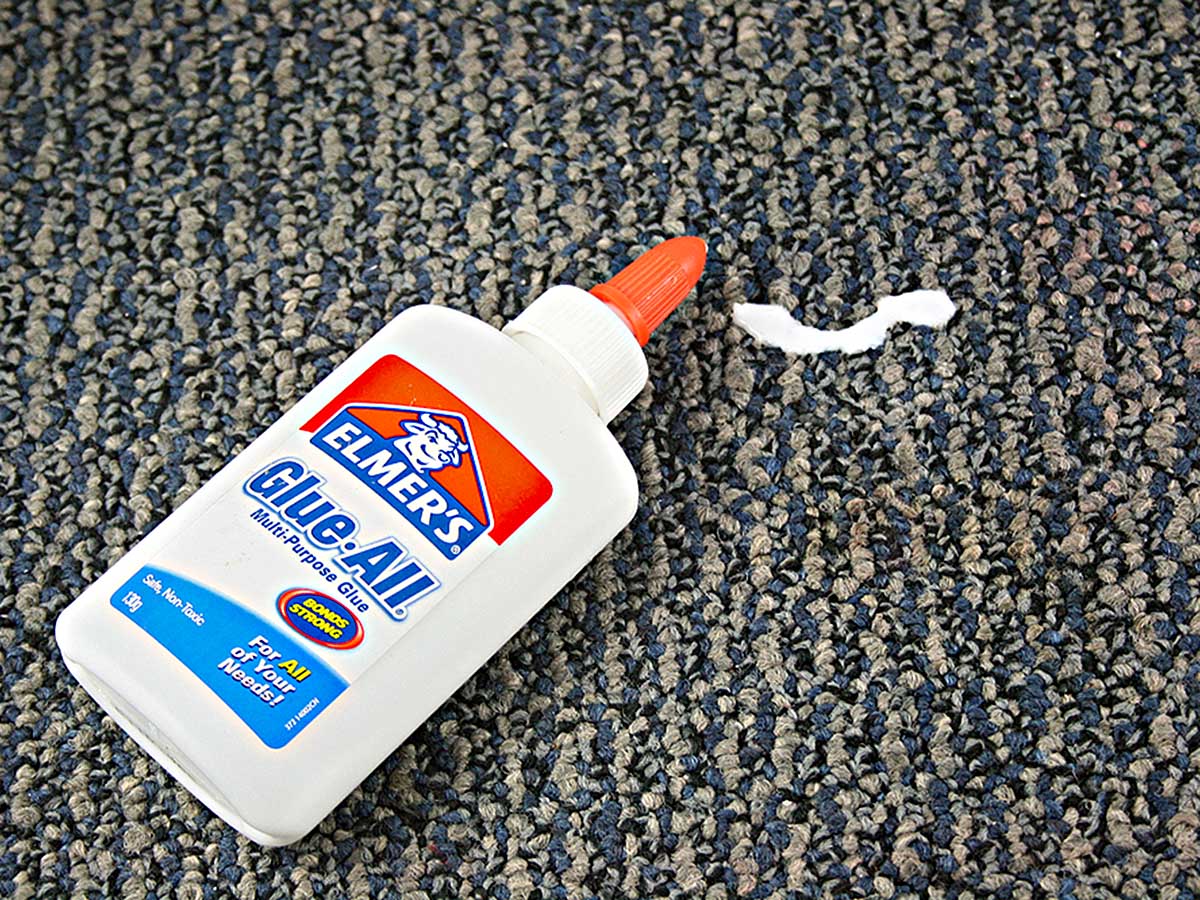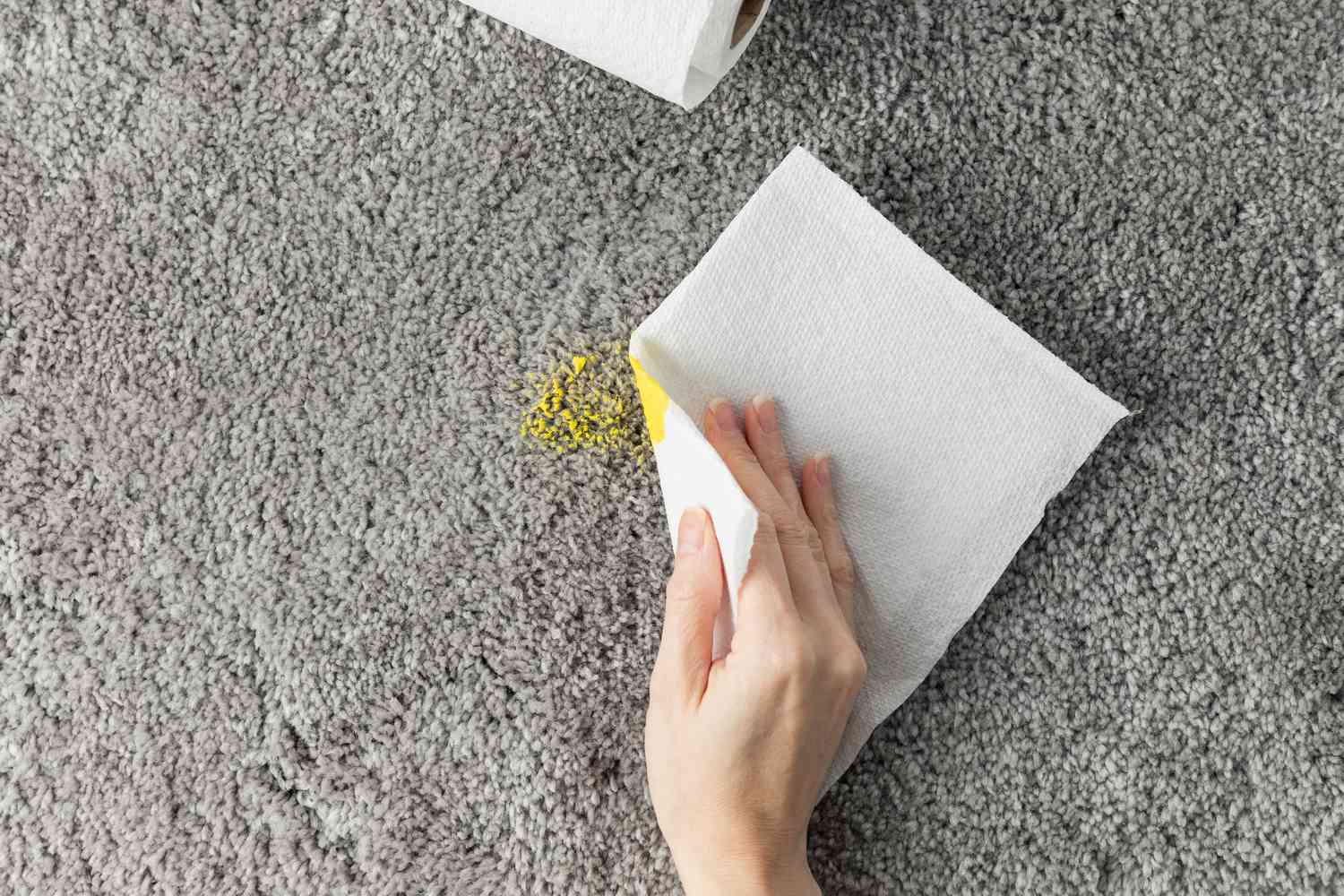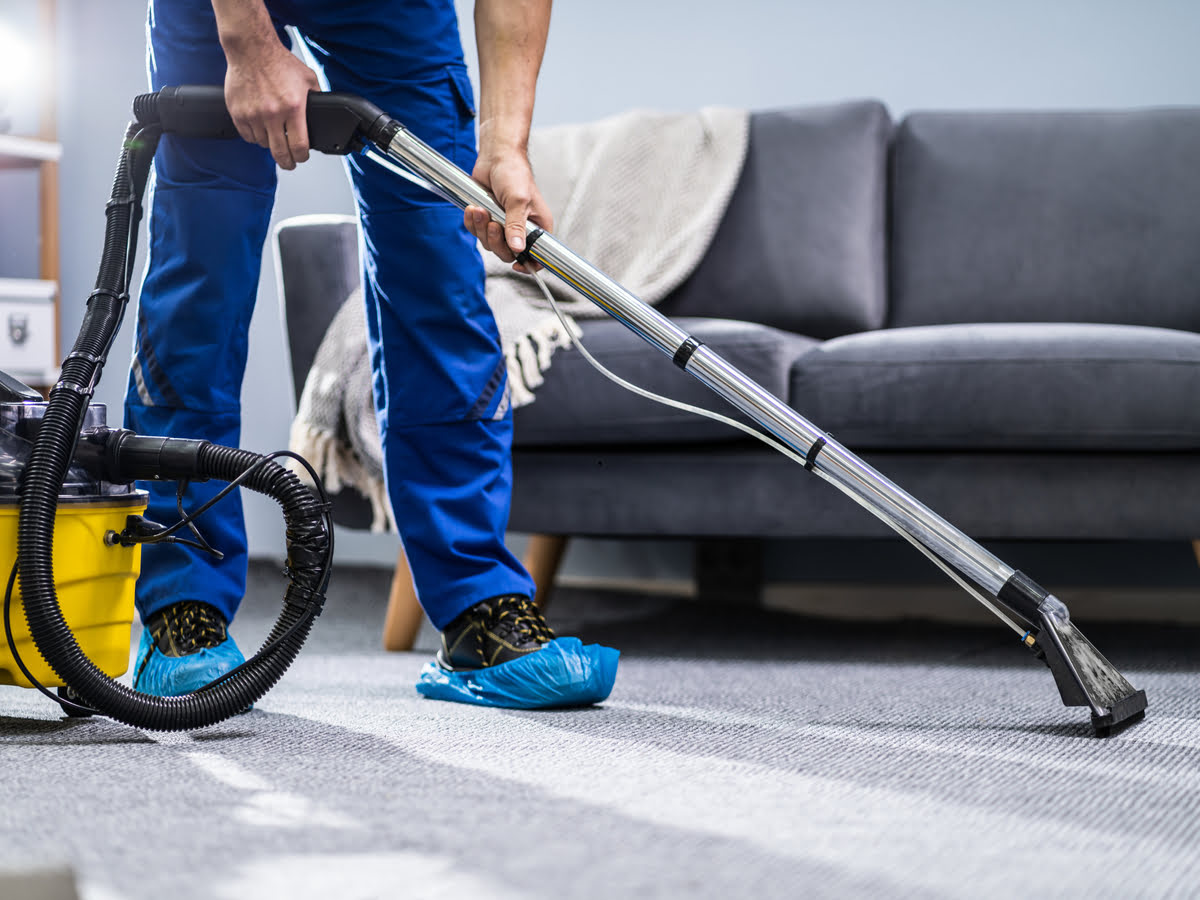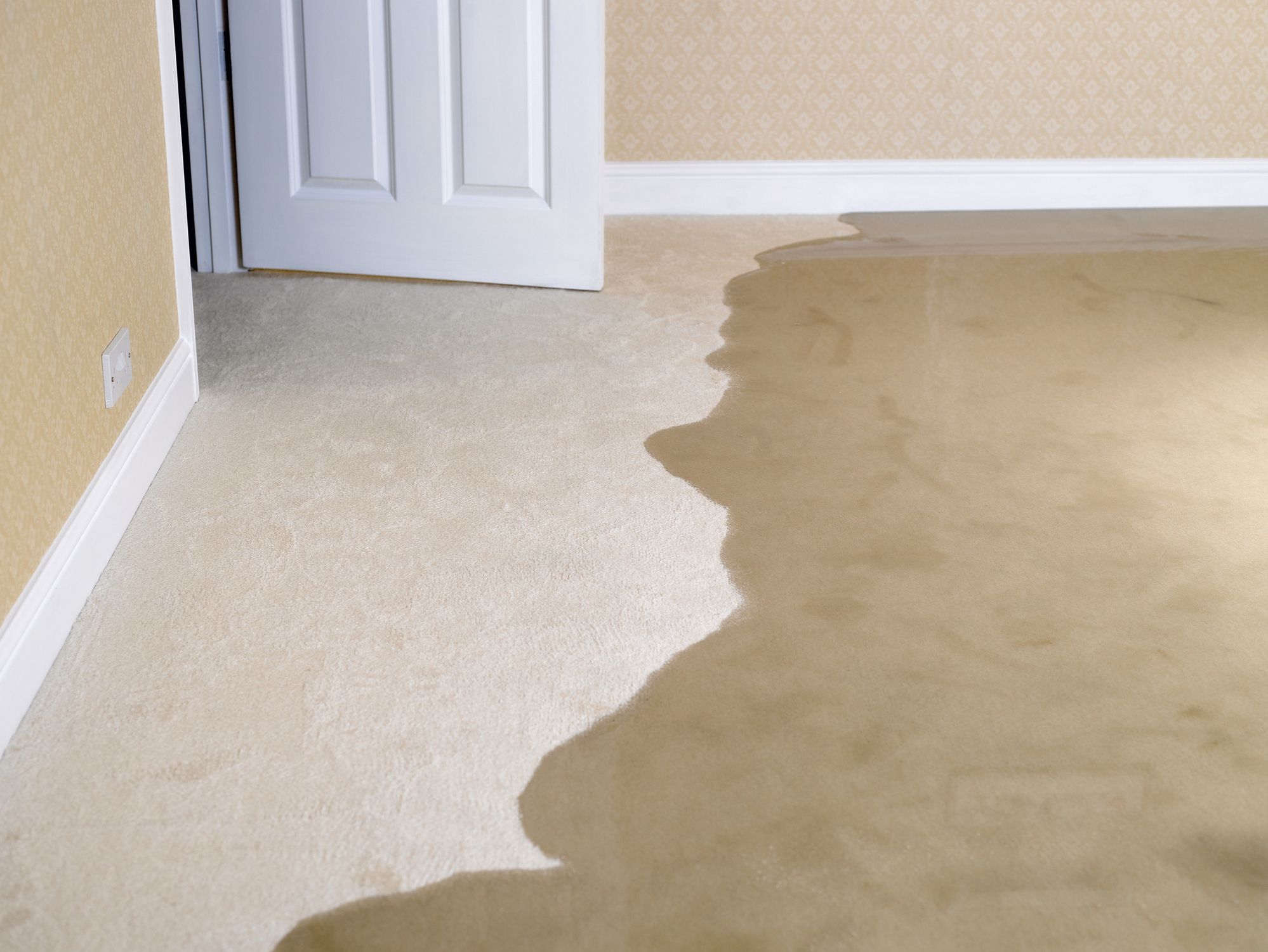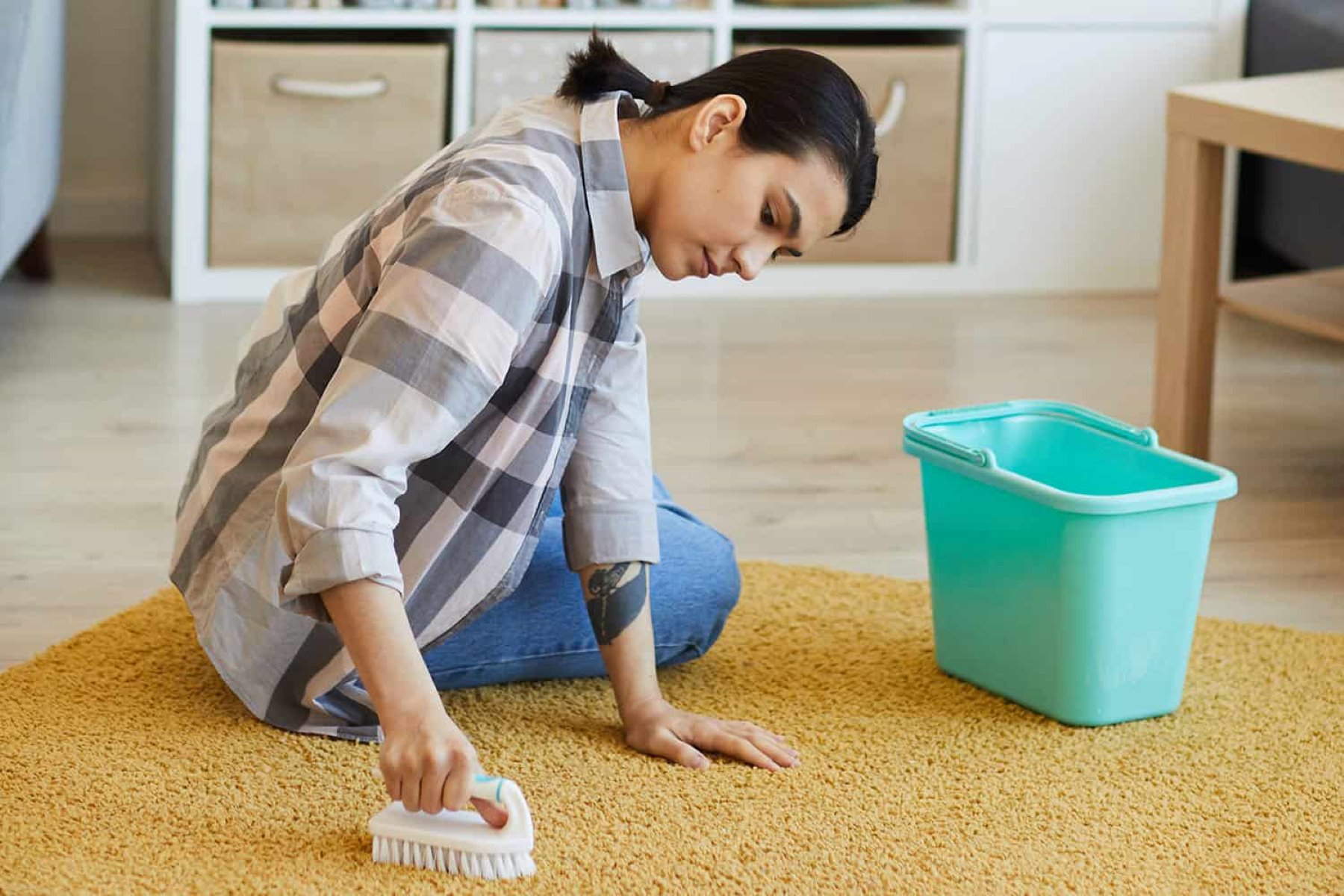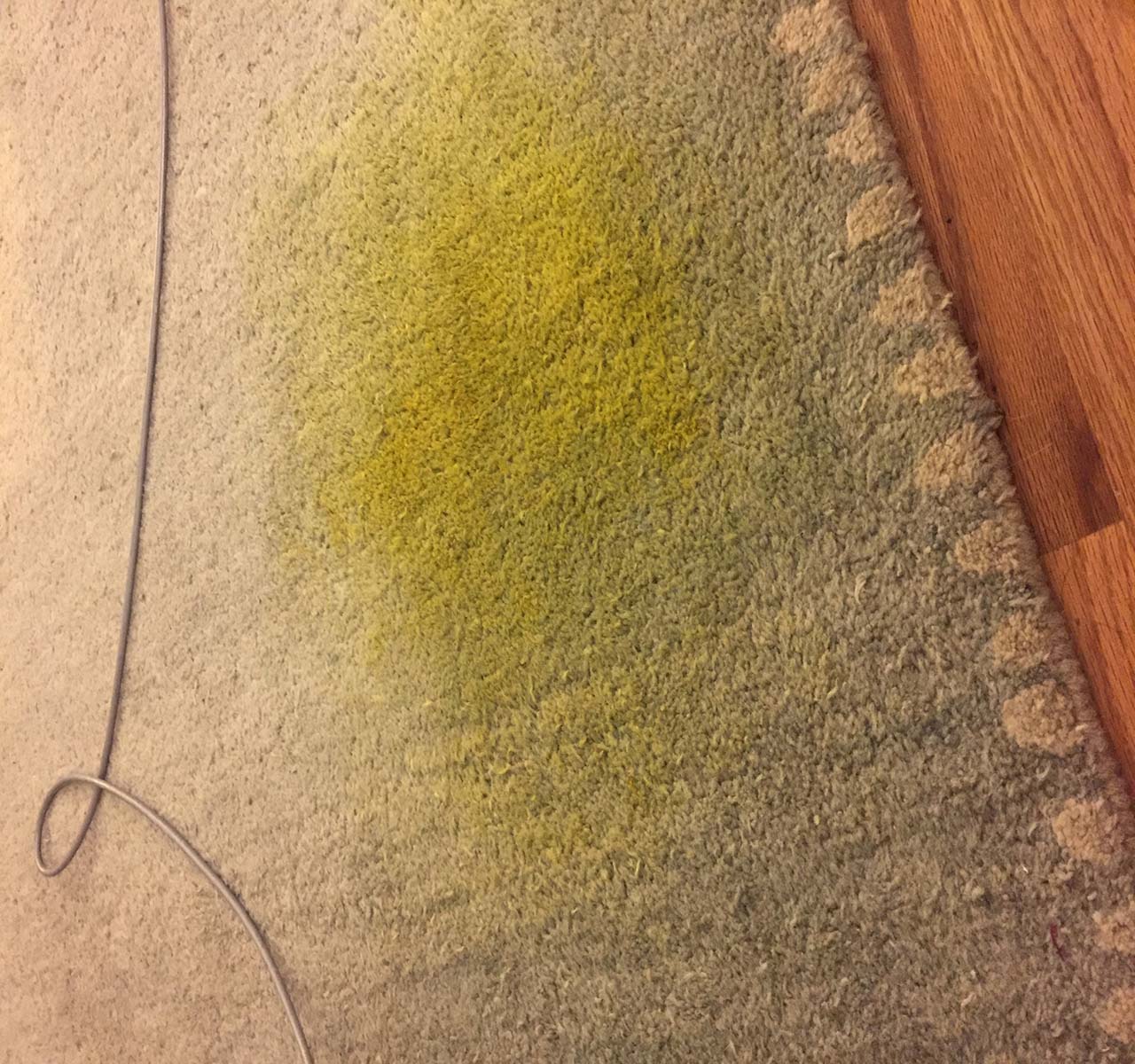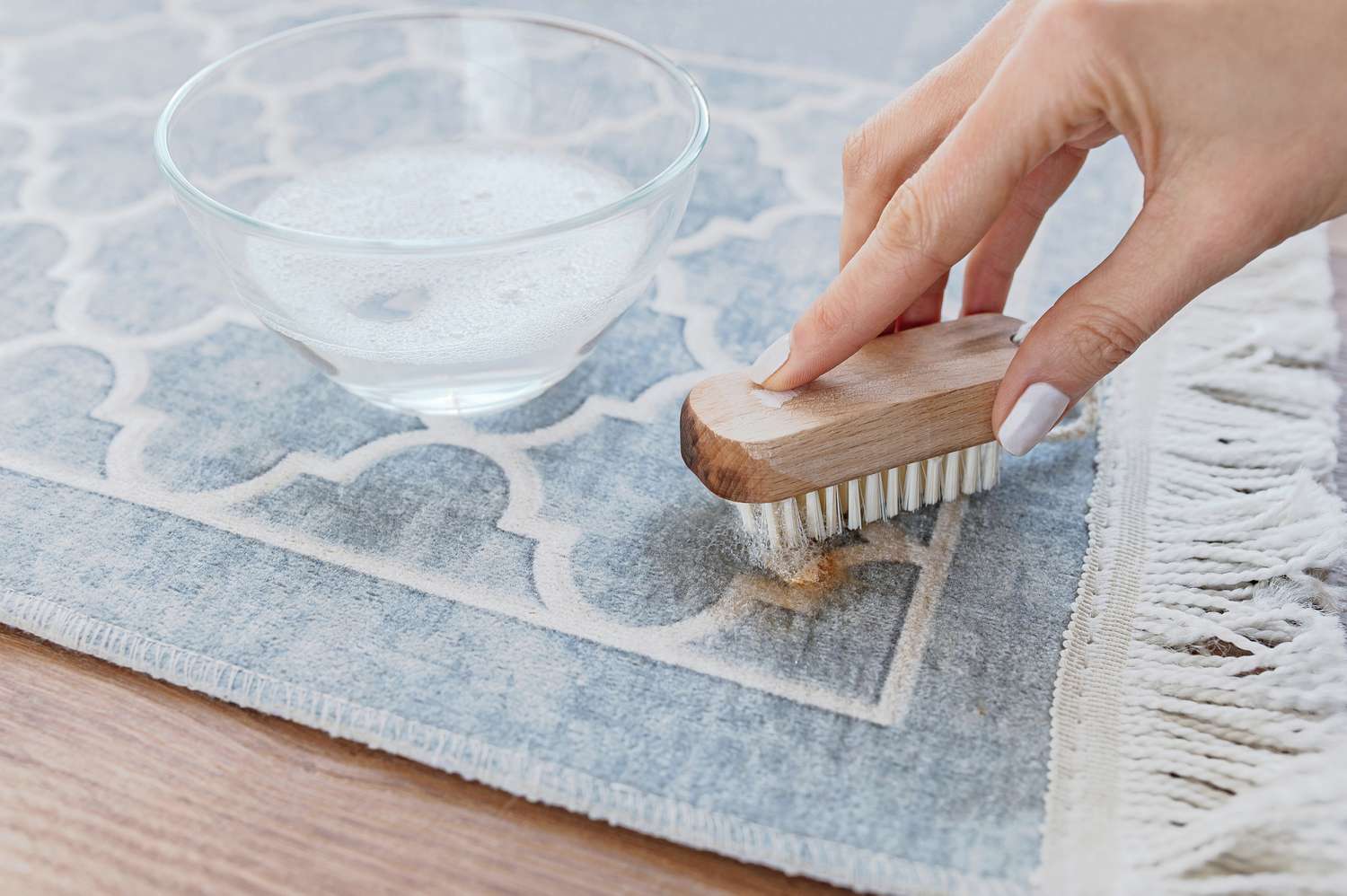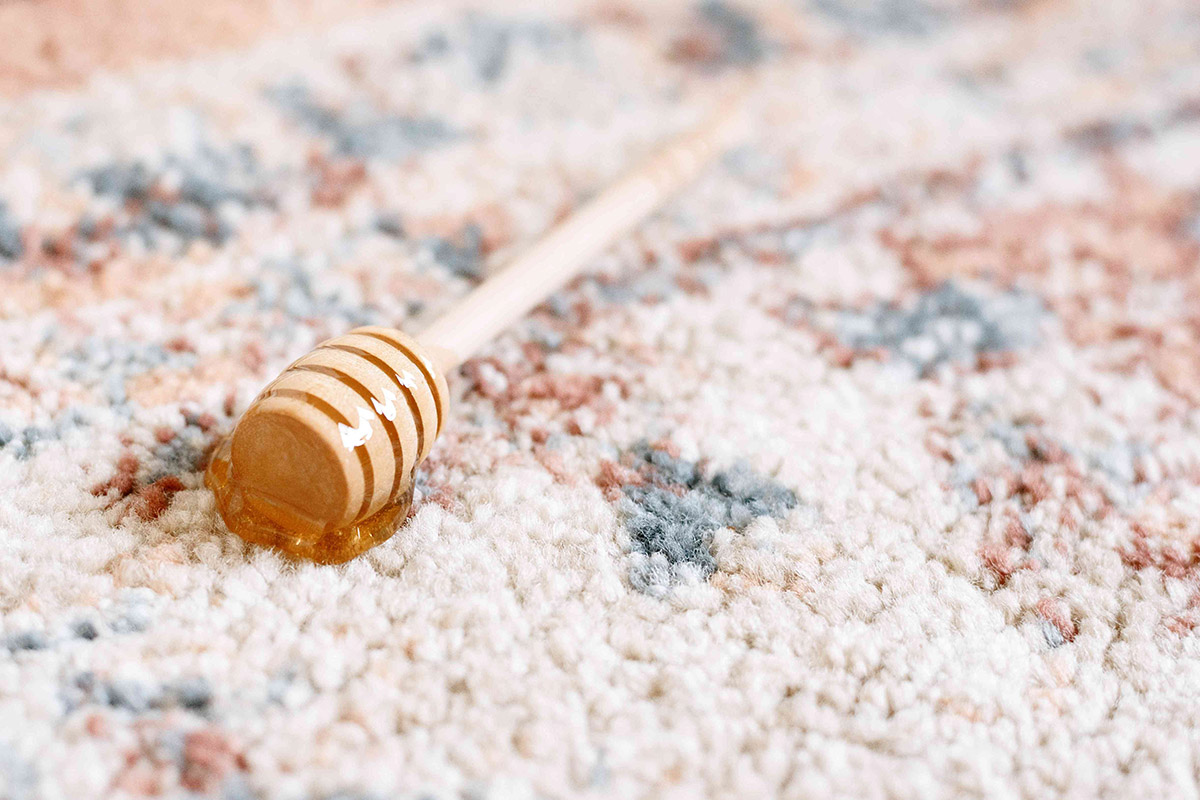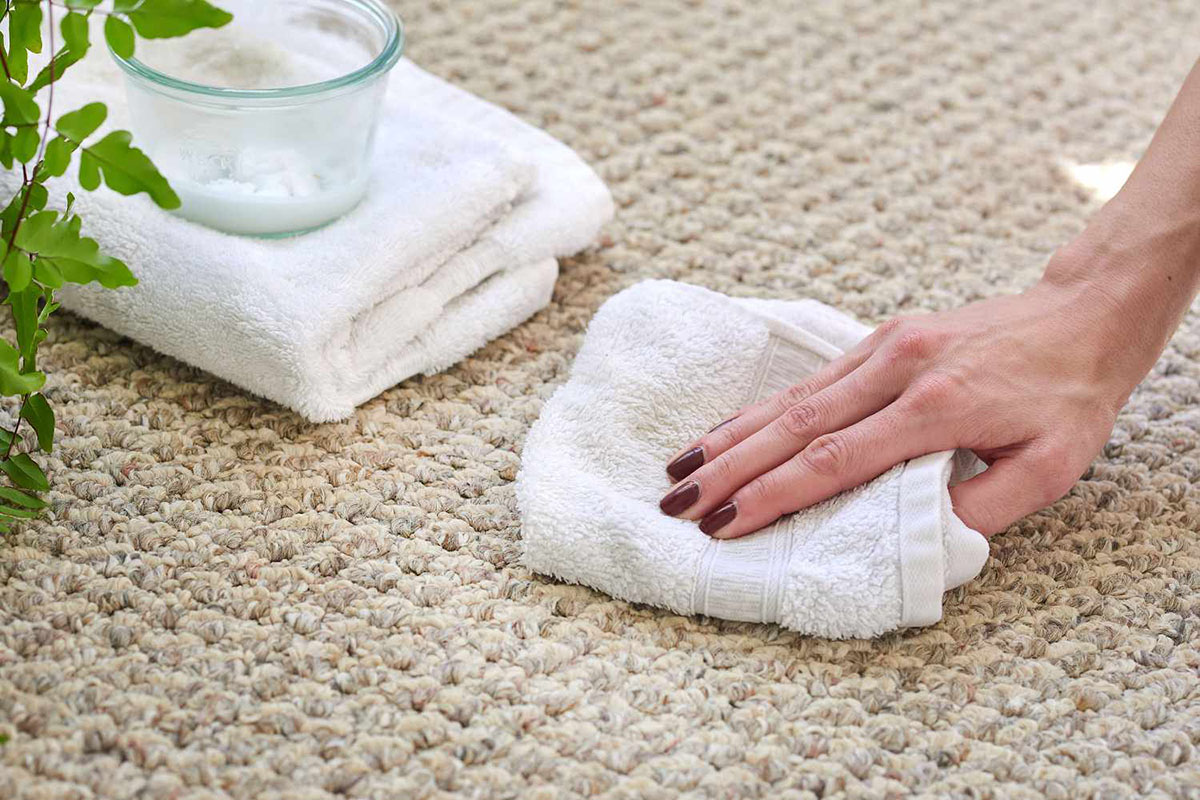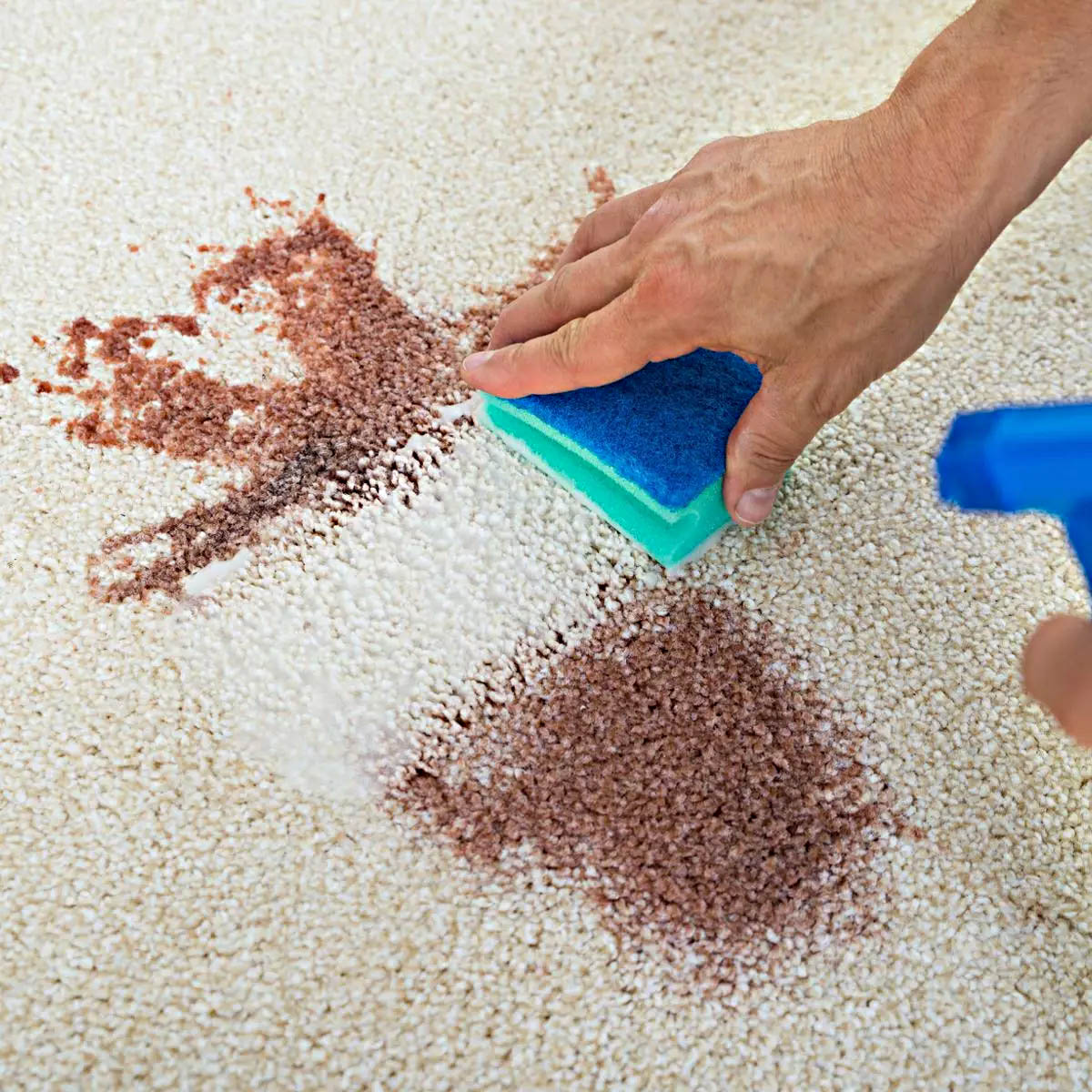

Articles
How To Get Dried Resin Out Of The Carpet
Modified: May 6, 2024
Learn effective methods for removing dried resin from your carpet in this informative article. Find step-by-step instructions and helpful tips to tackle this stubborn stain.
(Many of the links in this article redirect to a specific reviewed product. Your purchase of these products through affiliate links helps to generate commission for Storables.com, at no extra cost. Learn more)
Introduction
Having dried resin on your carpet can be a real headache. Whether it’s from a crafting project gone awry or an accidental spill, the sticky residue can be challenging to remove. However, with the right techniques and a little bit of patience, you can effectively get dried resin out of your carpet and restore its pristine condition.
In this article, we will guide you through a step-by-step process to tackle dried resin stains on your carpet. We will share expert tips and tricks to ensure that the removal is done safely and effectively, without causing any damage to the carpet fibers. So, let’s dive in and learn how to deal with this pesky problem.
But first, let’s briefly discuss what resin is and why it can be difficult to remove from carpet fibers. Resin is a viscous substance that is often used for crafting, woodworking, or as an adhesive. It has a sticky nature, which allows it to bond surfaces together. When resin dries and hardens, it forms a strong and durable material that can be challenging to remove.
When resin accidentally falls or spills onto your carpet, it can create a sticky and unsightly mess. If left untreated, it can attract dirt, become harder to remove, and potentially damage the carpet fibers. Therefore, it is essential to tackle dried resin stains as quickly as possible to prevent further complications.
Now that we understand the nature of the problem let’s move on to the step-by-step process for removing dried resin from your carpet. By following these instructions and using the right tools and supplies, you will be able to effectively eliminate the resin and restore the beauty of your carpet.
Key Takeaways:
- Don’t panic if resin gets on your carpet! With the right tools and patience, you can effectively remove dried resin without damaging the fibers. Follow our step-by-step guide for a pristine carpet once again.
- Prevention is key! Take precautions when working with resin near carpets to avoid future stains. With the right techniques and tools, you can confidently tackle dried resin and maintain the beauty of your carpet.
Read more: How To Get Dry Milk Out Of A Carpet
Step 1: Assess the Dried Resin
The first step in removing dried resin from your carpet is to assess the extent of the stain. Take a close look at the affected area and determine the size and thickness of the resin. This will help you determine the best course of action and gather the right tools and supplies for the removal process.
If the resin is thick and there is a large amount of it on the carpet, you may need to take extra precautions and use additional techniques to remove it effectively. On the other hand, if the resin is thin and only covers a small area, the removal process may be simpler.
Additionally, consider the type of carpet you have. Different carpet materials may react differently to cleaning agents and techniques, so it’s important to be aware of any specific care instructions provided by the manufacturer.
Once you have assessed the dried resin and understood the scope of the stain, you can proceed to the next step: gathering the necessary tools and supplies for the removal process.
Key Points:
- Assess the size and thickness of the dried resin stain.
- Consider the type of carpet you have.
- Determine the best course of action based on the assessment.
Step 2: Prepare the Necessary Tools and Supplies
Before you begin the process of removing dried resin from your carpet, it is essential to gather all the necessary tools and supplies. Having everything ready beforehand will make the removal process smoother and more efficient.
Here are the tools and supplies you will need:
- Scraping tool: Start by getting a scraping tool, such as a plastic putty knife or an old credit card. This will help you gently scrape off any excess dried resin from the surface of the carpet. Be careful not to apply too much pressure as it may damage the carpet fibers.
- Non-acetone nail polish remover: Non-acetone nail polish remover contains chemicals that can help break down the dried resin and make it easier to remove. Look for a remover that does not contain acetone, as acetone can damage certain types of carpets.
- Clean white cloth or sponge: Prepare a clean white cloth or sponge to blot the affected area. Using a white cloth allows you to see if any resin is being transferred from the carpet to the cloth, indicating progress in the removal process.
- Mild carpet cleaner: In addition to the nail polish remover, you may need a mild carpet cleaner to remove any residual stains or sticky residue. Choose a cleaner that is safe for your type of carpet and follow the manufacturer’s instructions.
- Warm water: Warm water will be used for rinsing the carpet after the resin removal process. Make sure the water is not too hot to avoid damaging the carpet.
- Bucket: Fill a bucket with warm water to use for rinsing the carpet.
With all the tools and supplies gathered and within reach, you are now prepared to move on to the next step: scraping off any excess resin from the carpet.
Key Points:
- Gather a scraping tool, non-acetone nail polish remover, a clean white cloth or sponge, mild carpet cleaner, warm water, and a bucket.
- Use a plastic putty knife or an old credit card as a scraping tool.
- Choose a non-acetone nail polish remover to avoid damaging the carpet.
- Have a clean white cloth or sponge ready for blotting.
- Consider using a mild carpet cleaner for removing residual stains.
- Prepare warm water in a bucket for rinsing the carpet.
Step 3: Scrape off Excess Resin
After assessing the dried resin and gathering the necessary tools and supplies, it’s time to start the removal process by scraping off any excess resin from the carpet. This step will help eliminate as much of the dried residue as possible before moving on to the next steps.
Here’s how to scrape off the excess resin:
- Take your scraping tool, such as a plastic putty knife or an old credit card, and gently scrape the surface of the dried resin. Start at the outer edges of the stain and work towards the center to avoid spreading the resin further.
- Be careful not to apply too much pressure or use sharp objects that can damage the carpet fibers. The goal is to remove the excess resin without causing any additional harm.
- Continue scraping until you have removed as much of the dried resin as possible. You may need to make multiple passes to loosen all the residue.
- Collect the scraped resin using a dustpan or vacuum cleaner to prevent it from spreading to other areas of the carpet.
Keep in mind that scraping off the excess resin may not completely remove the stain, especially if the resin has penetrated deep into the carpet fibers. However, this step is crucial in preparing the carpet for the subsequent removal methods.
If there are still visible traces of resin after scraping, don’t worry. In the next steps, we will introduce a solution to dissolve and lift the remaining resin from the carpet fibers.
Key Points:
- Use a plastic putty knife or an old credit card to scrape off the excess resin.
- Start from the outer edges of the stain and work towards the center.
- Avoid applying excessive pressure or using sharp objects that can damage the carpet fibers.
- Collect the scraped resin to prevent it from spreading further.
- Scraping may not completely remove the resin stain, but it prepares the carpet for the next steps.
Step 4: Apply Non-Acetone Nail Polish Remover
Now that you have scraped off the excess resin, it’s time to tackle the remaining sticky residue. Non-acetone nail polish remover is an effective solution for breaking down dried resin and making it easier to remove from the carpet fibers.
Follow these steps to apply the non-acetone nail polish remover:
- Choose a non-acetone nail polish remover that does not contain acetone, as acetone can damage certain types of carpets. Make sure to read the label and confirm that it is safe to use on your carpet.
- Apply a small amount of the non-acetone nail polish remover directly onto the dried resin stain. Use a clean white cloth or sponge to gently dab and blot the affected area.
- Allow the nail polish remover to sit on the resin for a few minutes to help break it down. Avoid scrubbing or rubbing vigorously, as this can further embed the resin into the carpet fibers.
- After a few minutes, use the cloth or sponge to blot the stain, working from the outer edges towards the center. Keep blotting until you see the resin transferring from the carpet to the cloth.
- Continue applying the nail polish remover and blotting the stain until no more resin transfers onto the cloth. Be patient and take your time with this step to ensure that you remove as much of the resin as possible.
It’s important to note that using excessive amounts of nail polish remover or rubbing too vigorously can damage the carpet fibers. Therefore, it’s crucial to follow the instructions and be gentle during the application process.
If the resin stain is particularly stubborn, you may need to repeat this step multiple times to completely dissolve and remove the dried resin from the carpet.
Key Points:
- Select a non-acetone nail polish remover that is safe for your carpet.
- Apply a small amount of the nail polish remover directly onto the resin stain.
- Gently dab and blot the affected area using a clean white cloth or sponge.
- Allow the nail polish remover to sit on the resin for a few minutes.
- Blot the stain, working from the outer edges towards the center, until the resin transfers onto the cloth.
- Repeat the process if necessary, being careful not to damage the carpet fibers.
Use rubbing alcohol or nail polish remover to soften the dried resin, then gently scrape it off with a butter knife. Blot with a clean cloth and repeat until the resin is removed.
Read more: How To Get Dried Grease Out Of A Carpet
Step 5: Blot with a Clean Cloth
After applying the non-acetone nail polish remover to the dried resin stain, it’s time to blot the area to lift the dissolved resin and any remaining residue from the carpet fibers. Blotting allows you to absorb the loosened particles and prevent them from spreading or reattaching to the carpet.
Follow these steps to effectively blot the stain:
- Take a clean white cloth or sponge and press it gently onto the treated area. Do not rub or scrub vigorously, as this can push the resin deeper into the carpet or spread it to surrounding areas.
- Continue pressing and lifting the cloth or sponge onto the stained area, rotating to a clean section of the cloth as needed.
- Inspect the cloth regularly to check for any transferred resin. If you notice resin on the cloth, it indicates that the removal process is working.
- Continue blotting until the cloth comes away clean, without any visible residue or transferred resin.
Remember to be patient and gentle during the blotting process. Applying too much force can damage the carpet fibers or cause the resin to spread, making the removal process more challenging.
In case the cloth or sponge becomes saturated with residue, replace it with a clean one to ensure effective absorption. This will prevent the transferred resin from being redeposited onto the carpet.
Continue blotting until you are satisfied with the removal of the resin stain. If necessary, you can repeat the previous steps, including applying the non-acetone nail polish remover, and then proceed with blotting.
Key Points:
- Press a clean white cloth or sponge gently onto the treated area.
- Avoid rubbing or scrubbing vigorously to prevent spreading the resin.
- Rotate the cloth or sponge to a clean section as needed.
- Inspect the cloth for transferred resin to track progress.
- Continue blotting until the cloth comes away clean.
- Replace the cloth if saturated with residue to ensure effective absorption.
- Repeat the previous steps if necessary to achieve desired results.
Step 6: Repeat if Necessary
Depending on the severity of the dried resin stain and the effectiveness of the previous steps, you may need to repeat the removal process to ensure complete elimination of the residue. This step allows you to address any remaining traces of resin and further improve the appearance of your carpet.
Here’s how to determine if repeating the process is necessary:
- Assess the treated area after completing the previous steps. Check for any remaining resin stains or sticky residue on the carpet fibers.
- If you notice any lingering resin or residue, it may indicate the need for another round of removal. Repeat Steps 4 and 5, applying the non-acetone nail polish remover and blotting with a clean cloth.
- During this repeat process, pay extra attention to the affected area, being thorough in your application and blotting to capture any missed spots.
- Continue repeating the process until the resin stains and residue are completely removed. It may take a few rounds of removal to achieve the desired results, especially for more stubborn or deeply ingrained stains.
Remember to be patient throughout the reapplication and blotting process. It’s important to ensure that you don’t rush the removal procedure and risk damaging the carpet fibers.
Once you are satisfied with the removal outcome, proceed to the next step to ensure the overall cleanliness of your carpet.
Key Points:
- Assess the treated area to check for remaining resin stains or residue.
- If necessary, repeat Steps 4 and 5 to remove any lingering resin.
- Be thorough and attentive during the reapplication and blotting process.
- Continue repeat removal until the stains and residue are completely eliminated.
- Take your time and be patient to avoid damaging the carpet fibers.
Step 7: Clean the Carpet
After successfully removing the dried resin stains from your carpet, it’s time to give the entire area a thorough cleaning to ensure it is fresh and free from any remaining residue or cleaning agents. This step will help restore the overall cleanliness and appearance of your carpet.
Follow these steps to clean the carpet:
- Prepare a mild carpet cleaner that is safe for your specific carpet type. Read and follow the instructions provided by the manufacturer.
- Dilute the carpet cleaner according to the instructions, if necessary.
- Apply the diluted carpet cleaner to the entire treated area where the resin stains were located. Use a clean sponge or cloth and gently scrub the carpet fibers in a circular motion.
- Continue scrubbing the area until you have covered the entire treated section.
- Pay attention to any remaining spots or residue, and give those areas extra attention to ensure thorough cleaning.
- Once you have cleaned the treated area, wet a clean cloth or sponge with warm water and rinse the carpet. Gently blot the area to remove any excess cleaning solution.
- Allow the carpet to air dry completely. Open windows or turn on fans to facilitate the drying process and prevent moisture buildup.
By cleaning the carpet, you remove any last traces of cleaning agents and ensure that the fibers are fresh, clean, and revitalized. This step also helps eliminate any odors that may have been associated with the resin stains.
Key Points:
- Prepare a mild carpet cleaner that is safe for your carpet type.
- Dilute the carpet cleaner according to the instructions, if necessary.
- Gently scrub the treated area using a clean sponge or cloth.
- Give extra attention to remaining spots or residue.
- Rinse the carpet with a clean cloth or sponge soaked in warm water.
- Allow the carpet to air dry completely.
- Open windows or use fans to aid in the drying process.
Step 8: Rinse and Dry the Area
In the final step of removing dried resin from your carpet, it’s important to rinse the treated area to ensure the complete removal of any remaining cleaning solution or residue. This step will leave your carpet fresh, clean, and ready for use.
Follow these steps to rinse and dry the area:
- Fill a bucket with clean, warm water.
- Using a clean sponge or cloth, saturate it with the warm water from the bucket.
- Gently blot the treated area, ensuring that you cover the entire section where the resin stains were located.
- This rinsing step will help remove any lingering cleaning solution and residue from the carpet fibers.
- Continue rinsing until you’re confident that the carpet is thoroughly flushed.
- After rinsing, use a dry, clean cloth or towel to blot the area and absorb any excess moisture.
- Allow the carpet to air dry completely. Open windows or turn on fans to provide proper ventilation and aid in the drying process.
- Avoid walking on the wet carpet until it’s completely dry.
Ensuring that the carpet is fully rinsed and properly dried is crucial for the overall maintenance and longevity of the carpet. It prevents any leftover cleaning agents or moisture from attracting dirt or causing damage.
Once the carpet is dry, take a moment to appreciate the successful removal of the dried resin stains from your carpet.
Key Points:
- Fill a bucket with clean, warm water for rinsing.
- Saturate a clean sponge or cloth with the warm water.
- Gently blot the treated area to thoroughly rinse the carpet.
- Continue rinsing until confident that all traces of cleaning solution are removed.
- Use a dry cloth or towel to blot the area and absorb excess moisture.
- Allow the carpet to air dry completely.
- Avoid walking on the wet carpet until it’s dry.
Read more: How To Get Dried Tea Stain Out Of A Carpet
Conclusion
Removing dried resin from your carpet may initially seem like a daunting task, but with the right techniques and a little patience, you can successfully restore your carpet to its pristine condition. By following the step-by-step process outlined in this article, you can effectively eliminate the sticky residue and enjoy a clean and fresh carpet once again.
Remember to assess the dried resin stain, gather the necessary tools and supplies, and scrape off any excess resin before proceeding. Applying a non-acetone nail polish remover and gently blotting with a clean cloth or sponge will help dissolve and lift the resin from the carpet fibers. If necessary, repeat the process until the stain is completely removed.
Once the resin is gone, clean the entire area with a mild carpet cleaner, ensuring that all residue is eliminated. Rinse the carpet thoroughly and allow it to air dry completely before resuming regular use.
It’s important to approach the removal process with care to avoid damaging the carpet fibers. Be patient, follow the instructions, and take your time to achieve the best results. By using the appropriate tools and supplies, as well as being gentle and thorough throughout the process, you can successfully remove dried resin from your carpet.
Remember that prevention is key to avoiding future resin stains. Take precautions when working with resin near carpets, such as placing protective coverings or working in a designated area.
With these steps and tips in mind, you can confidently tackle dried resin stains and maintain the beauty of your carpet for years to come.
Now that you've tackled removing dried resin from your carpet, why not dive deeper into keeping your entire home in top shape? For those keen on maintaining their living space, our guide on home maintenance offers valuable insights. If your kitchen appliances need attention, our cleaning tips will show you how to spruce up that refrigerator, making it sparkle like new. And for enthusiasts eager to keep their floors immaculate, don't miss our recommendations for the carpet cleaning methods coming up in 2024. Keep your home looking its best with these easy-to-follow tips!
Frequently Asked Questions about How To Get Dried Resin Out Of The Carpet
Was this page helpful?
At Storables.com, we guarantee accurate and reliable information. Our content, validated by Expert Board Contributors, is crafted following stringent Editorial Policies. We're committed to providing you with well-researched, expert-backed insights for all your informational needs.
